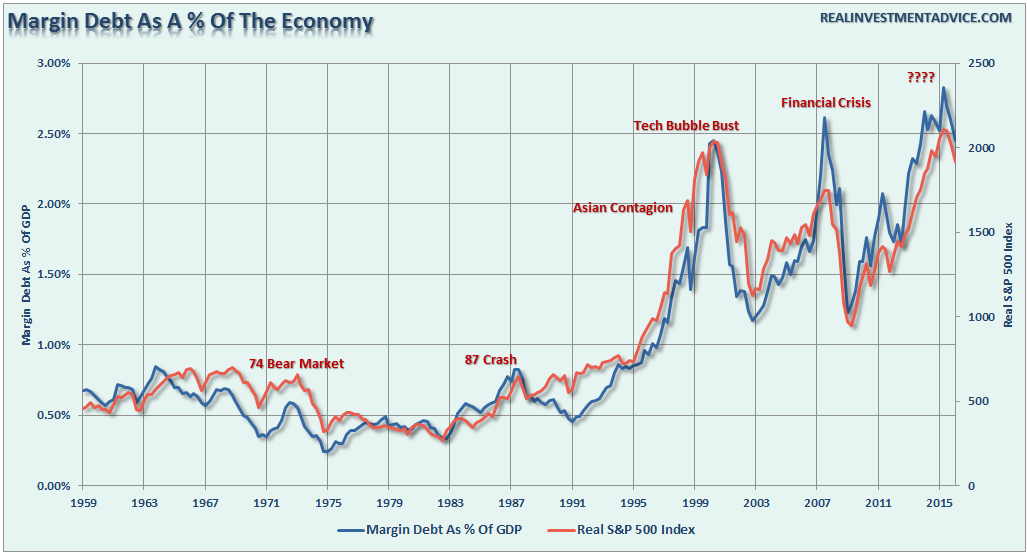The first month and a half of 2016 were brutal for the U.S. equity market, as the major averages plunged over 10%. The culmination of the decline came on Feb 11 when the Dow Jones Industrial Average dropped 1.6%, and the S&P 500 decreased 1.2%. Since then, the market has managed to hobble back to its 2015 closing level, leaving major averages relatively flat for the year.
But to understand where the market is heading from here we need to recognize what caused the selloff in early 2016 and what led to the recent rebound.
December 2015 ushered in the first rate hike by the Federal Reserve in nearly a decade. The Fed’s liftoff from ZIRP was highly anticipated by a massive rally in the U.S. dollar that began in July of 2014.
On January 25, 2016, the dollar index, which measures the greenback against a basket of six major currencies, hit a short-term high of 99.52. Since then, it dropped to a low of 93.62, which was a drop of 6%. The decrease in the dollar was the primary contributor for the rebound in the major averages. Investors sold dollars because Fed Chair Janet Yellen backed away from her previously threatened four rate hikes during 2016.
The fall in the dollar provided crucial support to global markets by boosting distressed commodity related debt held by financial institutions, improved the projected earnings of U.S. multinational corporations and also bolstering banks’ holdings of dollar-denominated foreign debt. In other words, the FOMC temporarily bailed out the global banking system on the back of the greenback.
But now the DXY is once again bouncing around that crucial 94 support level from where it has bottomed five times in the past year. And to keep the global equity bubble inflated, the FOMC must determine if it wants to engender a dollar bear market or allow equities to crash.
Wall Street puts its hope on a sinking dollar
The sad truth is there isn’t any solid fundamental factor to drive stocks higher. Therefore, investors have misplaced their hopes on betting the inflation produced from a falling dollar will be able to bail out the entire market.
A coordinated central bank attempt to depreciation the dollar is the Last desperate hope to keep the bubble inflated because the overvalued stock market isn’t being supported by earnings or GDP growth.
The U.S. is not the only country suffering from secular stagnation. The slowdown in global growth has been fully acknowledged by the International Monetary Fund (IMF). Firstly, the IMF just took down its outlook for U.S. growth to 2.4 %, from 2.6 %. And despite aggressive monetary policies implemented by the Bank of Japan, it has halved their forecast for Japanese growth this year to just 0.5 %. In 2017, when a consumption tax hike takes effect, the IMF expects the Japanese economy to shrink actually shrink once again -- as it has the habit of doing -- this time by 0.1 %.
The nineteen countries that share the euro currency are projected to collectively expand 1.5% this year, down from the 1.7 % projection. And Latin America, still suffering from China's slowdown, is expected to shrink 0.5 % this year, down from a January forecast of plus 0.3%. This contraction is led by Brazil whose economy is projected to shrink 3.8 % this year.
All this bad news has led the IMF to cut its global growth forecast for the fourth time in the past year, this time from 3.4%, to 3.2%. Last year the global economy grew 3.1 %, its slowest pace since the recessionary year of 2009.
U.S. Q1 GDP, according to the Atlanta Fed Model, is set to grow by a meager 0.3%. The Atlanta Fed’s model doesn’t include an estimate for nominal growth, but using last quarter’s GDP deflator we can glean that Q1 nominal growth (inflation + real growth) will be about 1.2%. Nominal GDP growth of just 1.2% is beyond pitiful. And since S&P 500 earnings tend to grow with nominal GDP, we can make the same sorry assessment about the health of U.S. corporations.
Hence, according to Zack’s Financial Research, total earnings for Q1 are expected to be down 11.1% on negative 2.3% revenues. Earnings growth is expected to be negative for 11 of the 16 sectors that Zack’s covers. The negative earnings growth in Q1 will be the fourth quarter in a row of earnings declines for the S&P 500 index.
The weak dollar may provide some temporary relief to the stock market. However, the major averages are still extremely overvalued and overleveraged:

Margin debt as a percent of the economy is higher today than both 2000 and 2007.
The median price-to-earnings ratio that sits at 22.6, isat a higher level than the market peak in 2007.And at 22.6, the S&P 500 index is currently 25.3% above its median fair value.
The Prices-to-Sales Ratio is now not only higher than in 2007;but also at any other time in history with the exception of the top of the internet bubble in 2000. And finally, the total market cap of corporations in relation to the economy is also higher than any other time in history outside of the NASDAQ craze.
All things being equal the combination of falling corporate earnings and revenue, along with peak market valuations and leverage should cause the equity market to collapse. This is why the Fed has decided to hold in abeyance future rate hikes, in hopes the falling dollar will continue to bail out the global financial system.
But a falling dollar isn’t a long-term or viable strategy to generate economic prosperity. All you have to do is look at Japan to realize that growth doesn’t come from a crumbling currency. The yen has dropped 35% in the past few years and Japan’s economy and has been mired in a perpetual recession. At best, the USD breaking 94 on the DXY will provide only temporary relief for the major averages. But inflation and currency destruction is the bane of viable growth and will lead to yet a further dislocation between asset prices and underlying economic growth…and that means the eventual day of reckoning will be much more pernicious.
